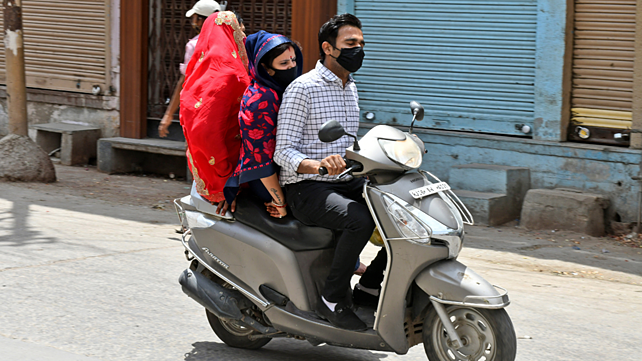
Indian two-wheeler industry which has been under pressure due to rising petrol prices and increased pricing of two-wheelers, is expected to contract by 1-4% in the ongoing fiscal years, as per the estimates of ICRA ratings.
This is further confirmed by the fact that the domestic volumes of 8.05 million in the first seven months of FY22 are flattish on a Y-o-Y basis despite a severely contracted base.
The relentless increase in 2W prices during the year and record-high petrol rates have kept consumers away from dealerships.
The rural offtake has lagged urban, possibly due to moderated agri-sentiments caused by uneven monsoons and delayed harvesting across regions.
In the urban markets, the delay in reopening schools and colleges, weak income sentiments due to job losses or salary cuts (in the aftermath of the pandemic) and extended work-from-home policies by corporates have impacted sales.
Additionally, the financiers have remained cautious after witnessing an increase in delinquency levels. While the demand for premium 2Ws, which comprise ~15% of the overall domestic volumes, has fared relatively better, the OEMs have faced supply constraints due to semiconductor chip shortages.
Overall, given the existing inventory at dealerships post-festive season (40-45 days), high growth in wholesale dispatches in the remaining part of the fiscal is unlikely.
Rohan Kanwar Gupta, Vice President & Sector Head, Corporate Ratings, ICRA, said the entry segment (75-110cc), which dominates 2W sales in India, has remained subdued this year, reflecting the extensive (and extended) impact of the second wave of the pandemic. The lacklustre festive season performance also highlighted continued wariness among the low-income population regarding big-ticket purchases.
“Income uncertainties, caused by job losses, salary cuts or limited increments, while facing COVID-related medical expenses (actual or anticipated) and skyrocketing cost of 2W ownership, have led to purchase deferrals this festive season. Given the muted sales, the inventory at dealerships is also relatively high, which could mean only a marginal, if any, traction in wholesale volumes in remaining FY22,” he added.
While the recent cut in petrol prices, the upcoming wedding season (typically lends itself to an increase in 2W purchase in rural markets) and opening up of labour-intensive industries like travel, tourism, and hospitality are favourable for demand recovery in the forthcoming months, meaningful growth is likely to be seen only in the next fiscal.
“On the financial front, given the high operating leverage of the industry, subdued demand and elevated raw-material costs are expected to keep the operating margins constrained for the 2W OEMs in the current fiscal. However, these will likely be supported by price escalations and cost rationalisation initiatives,” Gupta added.
The credit profile of 2W OEMs would continue to remain healthy, supported by strong balance sheets with high net worth, limited debt and sizeable cash and liquid investments. While the capex would be higher than the FY21 levels, major expansion plans are expected to be deferred till a meaningful demand recovery.
The OEMs will continue to invest in new product development, new technologies (including electric vehicles) and network expansion in domestic and overseas markets.